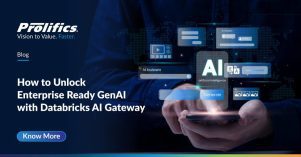By Swati Dora, Associate Director – Client Success
Energy and utility (E&U) companies are tapping into a data-driven revolution. By analyzing data from meters, electric vehicles (EVs), and smart grids, they’re uncovering hidden insights about their operations, customers, and sustainability goals.
With advanced metering infrastructure, AI algorithms, and real-time data visualization, these companies are enhancing decision-making, optimizing resource use, and paving the way for a smarter, greener future.
The Rise of Data Analytics in Energy and Utilities
Today’s E&U sector depends on intelligent data systems to predict energy demand, manage renewable integration, and ensure grid reliability. From machine learning models to smart sensors, digital transformation is powering operational excellence.
Let’s explore the nine most impactful ways data analytics and AI are reshaping the energy landscape.
1. Machine Learning and Artificial Intelligence (AI)
Machine learning and AI algorithms are at the core of modern energy analytics.
They help:
- Predict energy demand and consumption patterns
- Optimize resource allocation
- Detect faults and anomalies in the grid
- Enable predictive maintenance for EV charging networks
By analyzing historical meter and EV data, companies can proactively plan capacity, minimize downtime, and ensure seamless service delivery.
Example Tools: Tableau, Power BI, and Domo – all integrate machine learning models to visualize and interpret AI-driven insights.
Smart Devices Powering AI Analytics
- Smart Energy Monitors – Devices like Sense or Neurio track real-time consumption, uncovering energy-saving opportunities.
- Smart EV Charging Stations – Tools such as ChargePoint Home Flex or JuiceBox Pro optimize EV charging schedules and manage peak loads.
- Smart Grid Sensors – Real-time sensors detect grid issues early, improving reliability and reducing maintenance costs.
2. Advanced Metering Infrastructure (AMI)
AMI systems collect and transmit real-time data from smart meters, allowing companies to analyze usage patterns and detect inefficiencies.
With tools like Siemens EnergyIP or Schneider Electric EcoStruxure™ Resource Advisor, utilities can:
- Enhance demand response
- Improve grid reliability
- Boost operational efficiency
This data-driven approach ensures smarter energy management and better customer outcomes.
3. Data Visualization and Dashboards
Complex data becomes actionable through interactive dashboards.
Using Tableau, Power BI, or Domo, E&U companies can:
- Track energy consumption trends
- Monitor KPIs and anomalies
- Deliver personalized energy insights to customers
These visualizations simplify decision-making and help customers make informed energy choices.
4. Weather Data Integration
Weather data—temperature, wind speed, solar radiation—directly impacts energy demand and production.
By integrating this data, companies can:
- Predict renewable energy generation
- Manage load balancing
- Plan for peak demand periods
Weather analytics ensures consistent supply and efficient resource distribution.
5. Operational Data
Sensors, SCADA systems, and maintenance logs generate valuable operational data.
Analyzing this data helps utilities:
- Predict maintenance needs
- Prevent equipment failures
- Extend asset life cycles
Data-driven operations reduce downtime and enhance performance reliability.
6. Customer Data
Customer behavior is key to personalization.
By studying demographics, usage patterns, and billing data, E&U firms can:
- Create tailored energy plans
- Run targeted marketing campaigns
- Improve satisfaction and engagement
Personalized insights also support sustainability awareness among customers.
7. Market Data
Market analytics reveal real-time insights into energy pricing, regulations, and competition.
By leveraging this data, companies can:
- Set optimal pricing models
- Design responsive demand programs
- Strengthen market positioning
This adaptability helps utilities stay agile in fast-evolving energy markets.
8. Environmental Data
Sustainability is non-negotiable in the modern energy landscape.
Integrating environmental data—like air quality and carbon emissions—allows companies to:
- Track their carbon footprint
- Ensure compliance with environmental standards
- Enhance green energy initiatives
Data analytics supports transparent, measurable sustainability progress.
9. Grid Sensor Data
Smart sensors monitor real-time grid performance, voltage, and power quality.
With predictive analytics, E&U firms can:
- Detect anomalies instantly
- Prevent grid outages
- Improve service reliability and efficiency
Sensor-driven intelligence transforms reactive maintenance into proactive management.
Powering a Smarter, Greener Tomorrow
As Eleanor Roosevelt said, “The future belongs to those who believe in the beauty of their dreams.”
By embracing AI, machine learning, and data-driven innovation, energy and utility companies are not just managing power — they’re shaping the sustainable future of the planet.
Are you ready to empower your organization with intelligent energy insights?
📧 Connect with me at swati.dora@prolifics.com




